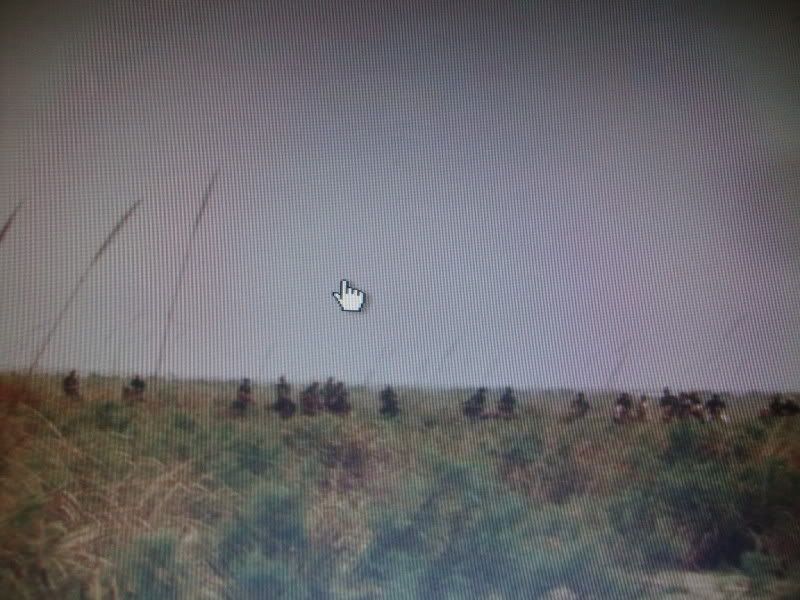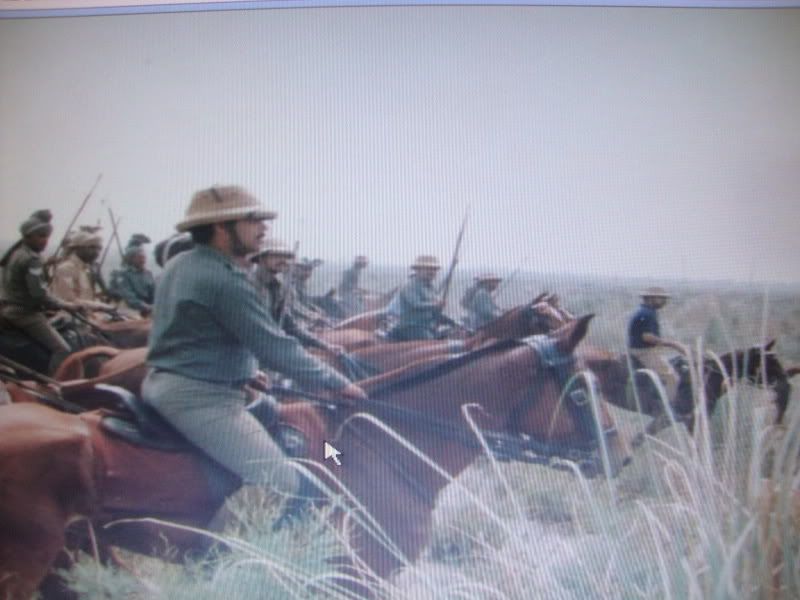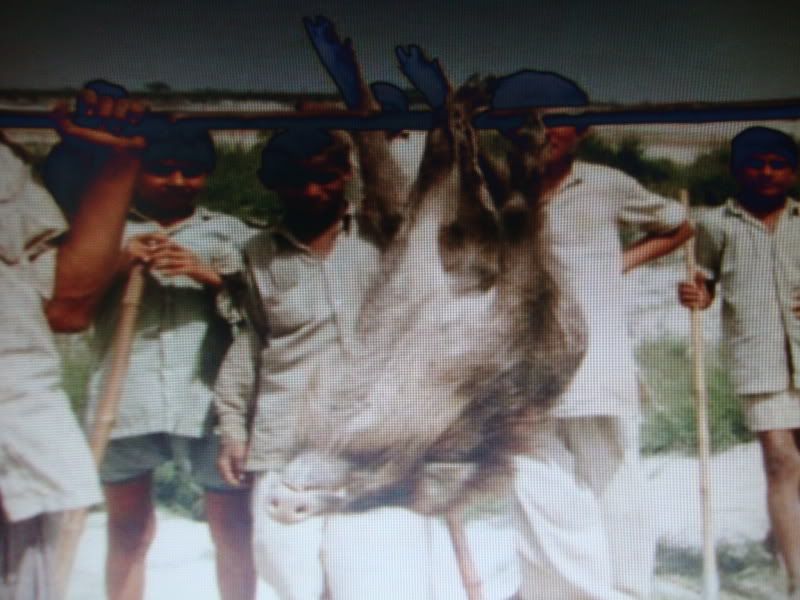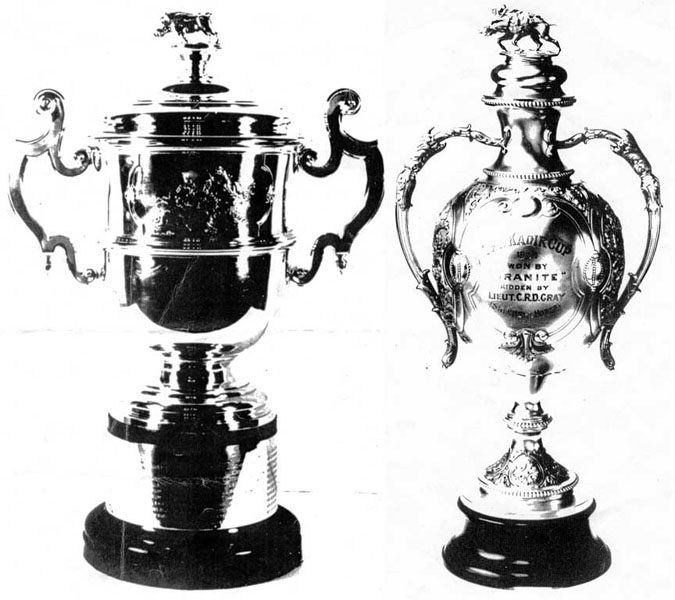Pig Sticking in the Ganga Khadar
Posted: Tue Mar 30, 2010 11:44 pm
Amongst all the animals in the Indian jungle the ones which are undoubtedly the most impressive are the three "T" s . The Tiger, The Tusker (a big male Asian elephant) and the smaller tusker (a big male wild boar). Anyone who has visited the Indian jungle will surely have some respect for these powerful , fearless and at times unpredictable animals.
One of the legacies of the British Raj was a "game" called "Pig Sticking". Even after India gained Independence , the game flourished amongst the royalties and the Cavalry regiments of the Indian Army ;till it was finally banned in the late 1980's. I,as a teenager had the rare privilage to attend the "game".
The game involved men on horseback armed with spears running down wild boar in the endless "sarkanda" (elephant grass) grasslands of the Ganga Khadar.
The game was played in other states as well , but in no other state was it as popular as in the United Provinces of Awadh and Agra (later Uttar Pradesh).
The basic rules of the game was to ride into the grassland and try to spear a wild pig. The person who drew first blood (in case one pig was killed) , or the one who speared the heaviest boar (in case more than one boars were killed) was declared the winner.
Sounds easy ......but believe me guys , this was the most difficult way to hunt the Indian Wild Boar. An animal known for it's fearless nature. Not an easy prey at all and not one to go down without a fight. There were times when men and mount were killed or badly injured facing the charge of an injured boar.
Like all the other games. This game had it's rules. The hunt usually began with the rising sun and ended by noon (after which the Sun was too hot for comfort ). The "Pig Sticker" made it a point to spare the "mother and her squeeker bacchaas" and persued the biggest amongst the males , in order to win . In case two riders were persuing the same pig , the rider on the left of the animal had the "right of way" , while the one on the wrong side had to wait for the animal to either run across to his side or maneuver his horse accordingly. Needless to say these rules were made for the safety of the horsemen, so that they did not land up spearing each other or their horses.
The rationale behind the "blood" sport was to train the soldiers and the men (in peace time) to the sight of blood , injury and death so that in times of war they were not adversely affected by them. (The more you sweat in peace, the less you bleed in war).
I can still recall the beautiful panoramic view of the sun rising over the grasslands and the horsemen on their horses galloping away into the horizon with the soft fine sand rising like a desert storm behind them. With reins in one hand and the spear in the other , eyes fixed on the bush below, they were a determined and a focused lot.
One had to have sharp senses, a steady hand , a lion's heart , a cool head and above all ,had to be a fantastic horseman to take part in the event. The Ganga Khadar criss crossed with narrow (but deep) revines were often traps for the galloping horses. Though some managed to jump over , many fell into them which resulted in serious injuries. I have met people who broke many a bones and yet once recovered , were back on the saddle; ready for the next season.
The only game which came anywhere close to "Pig Sticking" was "Fox hunting". I believe Fox hunting has also been banned (recently) in the U.K. But I would surely consider the former more challenging simply because the animal being persued was the fearsome wild boar and not a scared little fox , hounded by a pack of dogs.
P.S.
Will try and put up some old snaps. Much of the Ganga Khadar is now used for farming. It's rich alluvial soil and constant water supply makes it ideal for cultivation. The wild boar has suffered subsequently.
Not because of the "Hog Hunters on horseback" of yesteryears..........but because of the poor farmers encroaching on their habitat.
One of the legacies of the British Raj was a "game" called "Pig Sticking". Even after India gained Independence , the game flourished amongst the royalties and the Cavalry regiments of the Indian Army ;till it was finally banned in the late 1980's. I,as a teenager had the rare privilage to attend the "game".
The game involved men on horseback armed with spears running down wild boar in the endless "sarkanda" (elephant grass) grasslands of the Ganga Khadar.
The game was played in other states as well , but in no other state was it as popular as in the United Provinces of Awadh and Agra (later Uttar Pradesh).
The basic rules of the game was to ride into the grassland and try to spear a wild pig. The person who drew first blood (in case one pig was killed) , or the one who speared the heaviest boar (in case more than one boars were killed) was declared the winner.
Sounds easy ......but believe me guys , this was the most difficult way to hunt the Indian Wild Boar. An animal known for it's fearless nature. Not an easy prey at all and not one to go down without a fight. There were times when men and mount were killed or badly injured facing the charge of an injured boar.
Like all the other games. This game had it's rules. The hunt usually began with the rising sun and ended by noon (after which the Sun was too hot for comfort ). The "Pig Sticker" made it a point to spare the "mother and her squeeker bacchaas" and persued the biggest amongst the males , in order to win . In case two riders were persuing the same pig , the rider on the left of the animal had the "right of way" , while the one on the wrong side had to wait for the animal to either run across to his side or maneuver his horse accordingly. Needless to say these rules were made for the safety of the horsemen, so that they did not land up spearing each other or their horses.
The rationale behind the "blood" sport was to train the soldiers and the men (in peace time) to the sight of blood , injury and death so that in times of war they were not adversely affected by them. (The more you sweat in peace, the less you bleed in war).
I can still recall the beautiful panoramic view of the sun rising over the grasslands and the horsemen on their horses galloping away into the horizon with the soft fine sand rising like a desert storm behind them. With reins in one hand and the spear in the other , eyes fixed on the bush below, they were a determined and a focused lot.
One had to have sharp senses, a steady hand , a lion's heart , a cool head and above all ,had to be a fantastic horseman to take part in the event. The Ganga Khadar criss crossed with narrow (but deep) revines were often traps for the galloping horses. Though some managed to jump over , many fell into them which resulted in serious injuries. I have met people who broke many a bones and yet once recovered , were back on the saddle; ready for the next season.
The only game which came anywhere close to "Pig Sticking" was "Fox hunting". I believe Fox hunting has also been banned (recently) in the U.K. But I would surely consider the former more challenging simply because the animal being persued was the fearsome wild boar and not a scared little fox , hounded by a pack of dogs.
P.S.
Will try and put up some old snaps. Much of the Ganga Khadar is now used for farming. It's rich alluvial soil and constant water supply makes it ideal for cultivation. The wild boar has suffered subsequently.
Not because of the "Hog Hunters on horseback" of yesteryears..........but because of the poor farmers encroaching on their habitat.









